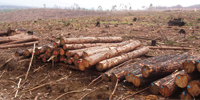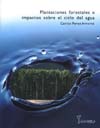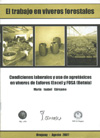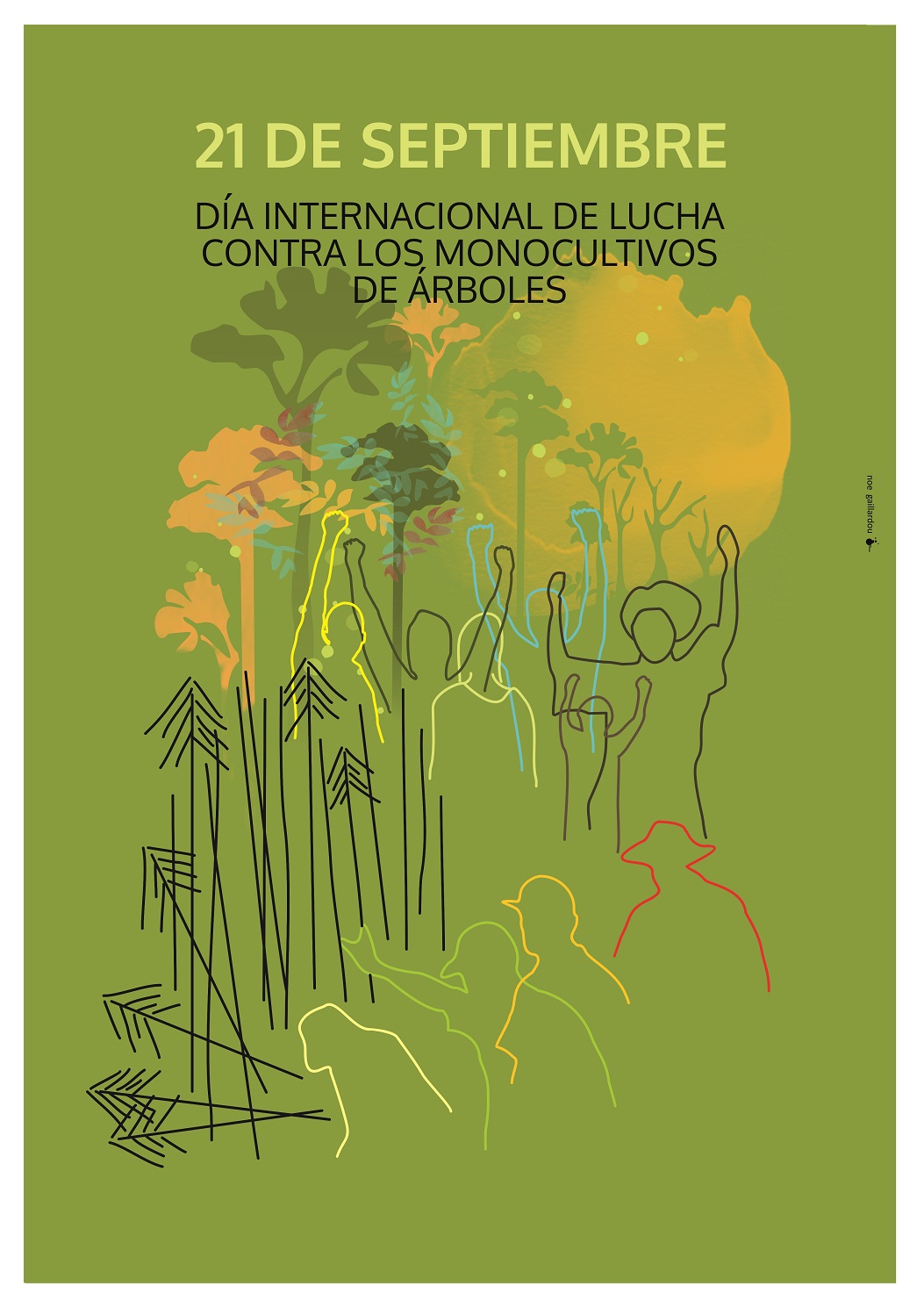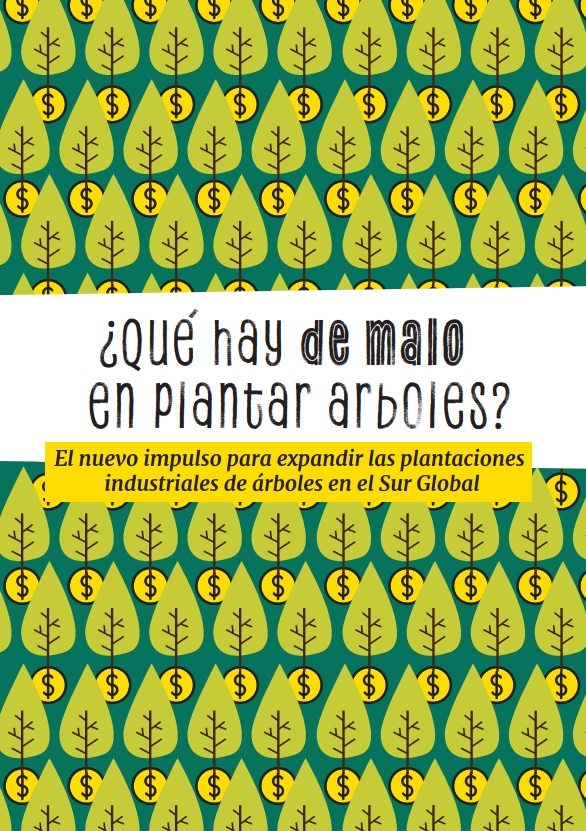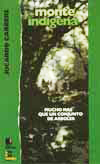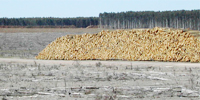In Uruguay, all forests are protected by law and their exploitation is forbidden unless expressly authorised by the bodies in charge of ensuring their protection. Therefore, certification in this country is totally unnecessary to ensure forest conservation. However, it is enough to enter the FSC web page’s “certified forest list” to discover that there are 75,000 hectares of certified “forests” in this country. Of course, on looking into details, one learns that in all cases these are plantations and not forests.
Beyond our total discrepancy with the pretension of considering plantations as “forests,” it is interesting to show some of the contradictions between certification of these plantations and FSC guidelines. These contradictions arise on reading the two first lines of the introduction to the FSC principles and criteria, where it is stated: “It is widely accepted that forest resources and associated lands should be managed to meet the social, economic, ecological, cultural and spiritual needs of present and future generations.”
Given that FSC equates plantations with forests and that principle 10 (plantations) clearly establishes that “Plantations shall be planned and managed in accordance with Principles and Criteria 1 – 9, and Principle 10 and its Criteria,” it becomes obvious that what is stated in the introduction is applicable to plantations.
The question is then: Do the plantations in Uruguay (and in particular certified ones) meet the “Social, economic, ecological, cultural and spiritual needs of present and future generations”?
Although this article will address the issue of social and economic needs, it should be pointed out that large-scale monoculture plantations in Uruguay clearly impact on its ecology. In fact, in this country, plantations are mainly established in grassland ecosystems, resulting in their destruction and that of their associated fauna. Therefore, it is absurd to think that they can meet the “ecological needs” of the country. This process is comparable to those we all denounce in the tropics (substitution of forests by grasslands), but the reverse: the substitution of native grasslands by “forests.”
This stated, we shall focus on the social and economic needs. The plan promoting afforestation launched in 1988 by the government, promised the generation of jobs and entry of currency because of the increase in exports of forest products. To achieve these objectives, the Uruguayan State made considerable investments, involving direct subsidies, tax exoneration, soft loans and investment in infrastructure. By the year 2000, the State had assigned US$69 million to the sector under the form of direct subsidies. The total of tax exonerations (on the area planted and goods imported) amounted to US$ 56 million, while soft loans were estimated at US$55 million. Finally, investment in infrastructure amounted to US$ 234 million. Summing up, Uruguayan society as a whole has contributed 414 million dollars to forestry development. What benefits has this society received?
Regarding job generation, the result is disastrous. Of all agricultural and stock-raising activities, extensive sheep and cattle raising has always been considered in Uruguay as the worst activities in terms of the amount of jobs generated per hectare. This is no longer so: afforestation has shown itself to be even more negative.
According to data from the 2000 agriculture and livestock census, the number of permanent workers per thousand afforested hectares is 4.49. Cattle-raising for meat generates 5.84 permanent jobs for the same area of land while sheep-raising provides 9.18 jobs. These, together with mechanised rice production (7.75) are the lowest figures. At the opposite extreme we find production for self-consumption (262 jobs per thousand hectares), poultry-raising (211), vine-growing (165), horticulture (133), and pig-raising (128) while in the middle come dairy cattle production (22), machinery services (20) and cereal or industrial crops (10).
Summing up, over a total of 660,000 hectares, afforestation has generated 2,962 permanent jobs. If we consider that plantations have displaced other agricultural and cattle-raising activities, and that all the other activities generate more jobs than afforestation, we reach the conclusion that this activity has led to a net loss of permanent jobs in the agricultural and stock-raising sector. In fact, in the hypothesis that the area under plantation continued to be occupied by cattle or sheep-raising, in the first case, jobs would have amounted to 3,854, while in the second, they would have amounted to 6,058. It is clear then that the remedy has been worse than the disease and that afforestation has contributed to rural migration. If we add to this the poor working conditions (low salaries, scant security, poor food and lodging, difficulties in organising as a trade union), informal jobs (implying no social security), and seasonal work, it is clear that afforestation in no way meets the social needs of the rural population.
In terms of economy, the situation is not much better. In fact, afforestation promised to increase entry of currency, but 80% of the exports in the forestry sector is composed of roundwood, while the remaining 20% is sawmill timber. That is to say, 80% of what is exported does not generate a single industrial job, while the other 20% consists of a minimum transformation of raw material that does not generate any important number of jobs either.
In turn, income from these exports does not imply any important entry of currency if compared with the area of land occupied by the sector. The forestry sector is annually exporting values of between 35 and 45 million dollars, placing it in one of the lowest positions within the export basket (annually totalling between 2,000 and 2,500 million dollars). If compared to rice, (a sector that also generates few jobs per hectare), we see that an average area sown of some 150,000 hectares (that is to say 4 times smaller than the area occupied by the forestry sector), generates some 200 million dollars from exports (that is to say, 5 times more than the amount obtained by the forestry sector). This means that afforestation does not achieve the objective set out in the introduction to FSC principles of “meeting the economic needs” of the country.
The questions asked by the Uruguayan environmental movement are: how is it possible for FSC to certify these plantations that do not fulfil any of the requisites they themselves have set out? How is it possible that the environmental and social NGOs participating in FSC allow this to happen? How is it possible that they do not realise that each certified plantation is weakening the campaigns we undertake to avoid our environment to continue being destroyed?
It is evident that something is wrong and we hope that the members of FSC will turn themselves to finding solutions, both for the good of the people and of the environment of countries such as Uruguay, and for ensuring the credibility of the certification system itself, that was created to ensure the protection of forests and not to give a coat of “green” paint to socially and environmentally unsustainable monoculture tree plantations.
By: Ricardo Carrere


